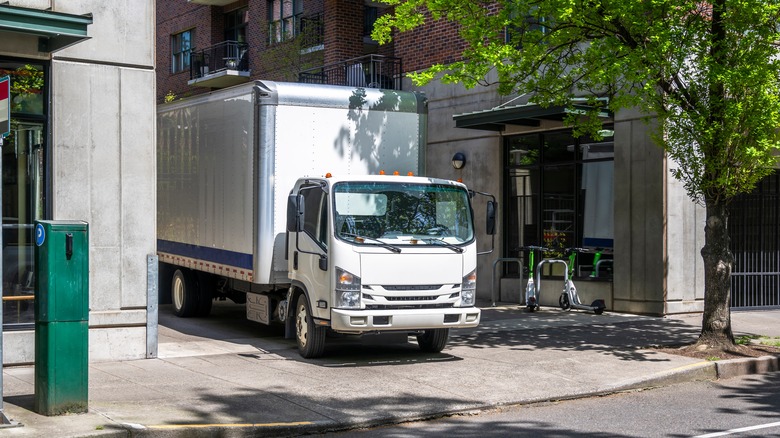
Carolyn Franks/Shutterstock
To the unobservant eye, all semi-trucks are the same massive machines that barrel down the highways. But upon closer inspection, you’ll find that there are quite a number of differences among these vehicles in their construction and performance. Just as with our everyday cars, the body style of a truck is made with a specific function in mind to suit the needs of a certain job.
Advertisement
One of the most distinct kinds of trucks you’ll see from time to time is known as a cab over. Sometimes also known as cab over engines, these vehicles stand out immediately with their flat-face design, which eliminates the projected hood you see on the front of conventional semi-trucks. While traditional semis have their engines housed under the front hood and behind the front axle, cab overs are built a little differently. Their cabins are located in front of or above the front axle of the truck, with their engines being located in the cabin in between the driver and passenger seats.
If you reside in North America, chances are you don’t see as many cab overs as you do conventional trucks. These trucks are far more common in European and Asian countries, largely due to the stricter regulations on size and speed limits in many of these regions. There’s also a greater lack of owner-operators in these areas compared to North America, meaning that truck drivers don’t require as much cabin space for rest and living.
Advertisement
What use a cab over instead of a conventional semi?

Vitpho/Shutterstock
Just as with the differences between semi-trucks and straight trucks, the elements that make cab overs stand out are crucial to enhancing their performance. While it may seem like cab overs and conventional semis operate more or less the same, there are some key differences between the two that help determine what is best for your job.
Advertisement
Perhaps the best quality of cab overs is the increased maneuverability they provide when compared to traditional semis. Thanks to their flat-face design and enhanced turning radius, cab overs are ideal for traversing narrow roads and corners. Aiding in this is the overall better visibility that comes with riding a cab over. The windshield size may not be drastically wider than that of a conventional semi, but thanks to the truck’s unique design, the driver is able to sit closer to the windshield and more easily spot hazards on the road as a result. Cab overs also make it easier to access and make repairs to the engine from ground level.
But that doesn’t mean they’re good for everyone. Given the unique position of the engine, bumps can be much more noticeable to the driver, making lengthy rides uncomfortable. Likewise, these trucks can be difficult to enter and exit as they often lack a ladder or similar support methods. And even though it’s beneficial to be closer to the windshield, it also leaves the truck open to more damage in the possibility of a head-on collision. This is not an ideal truck for owner-operators or someone on the road for extended periods, but it will more than suffice for driving through tight cities or neighborhoods.
Advertisement